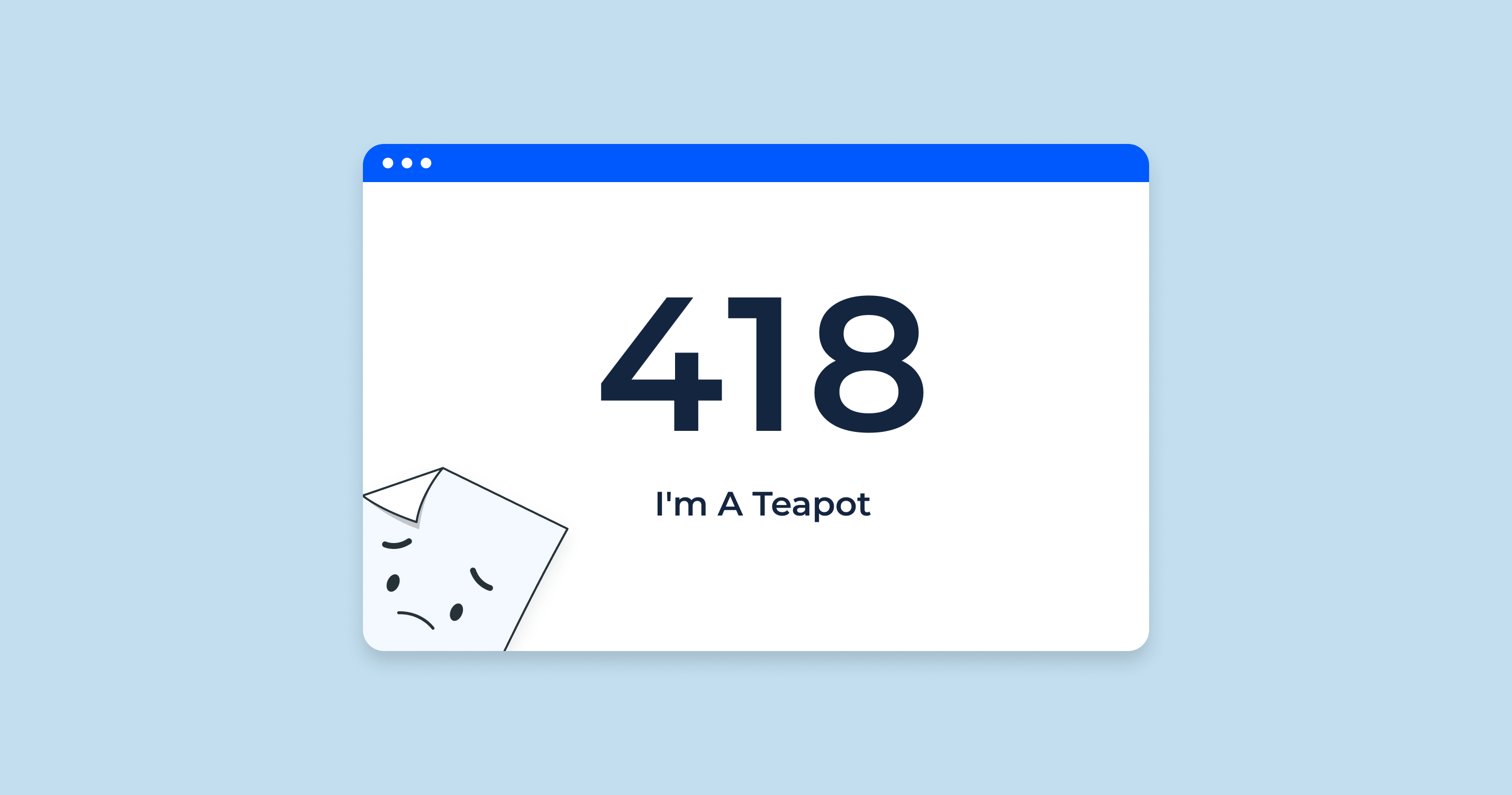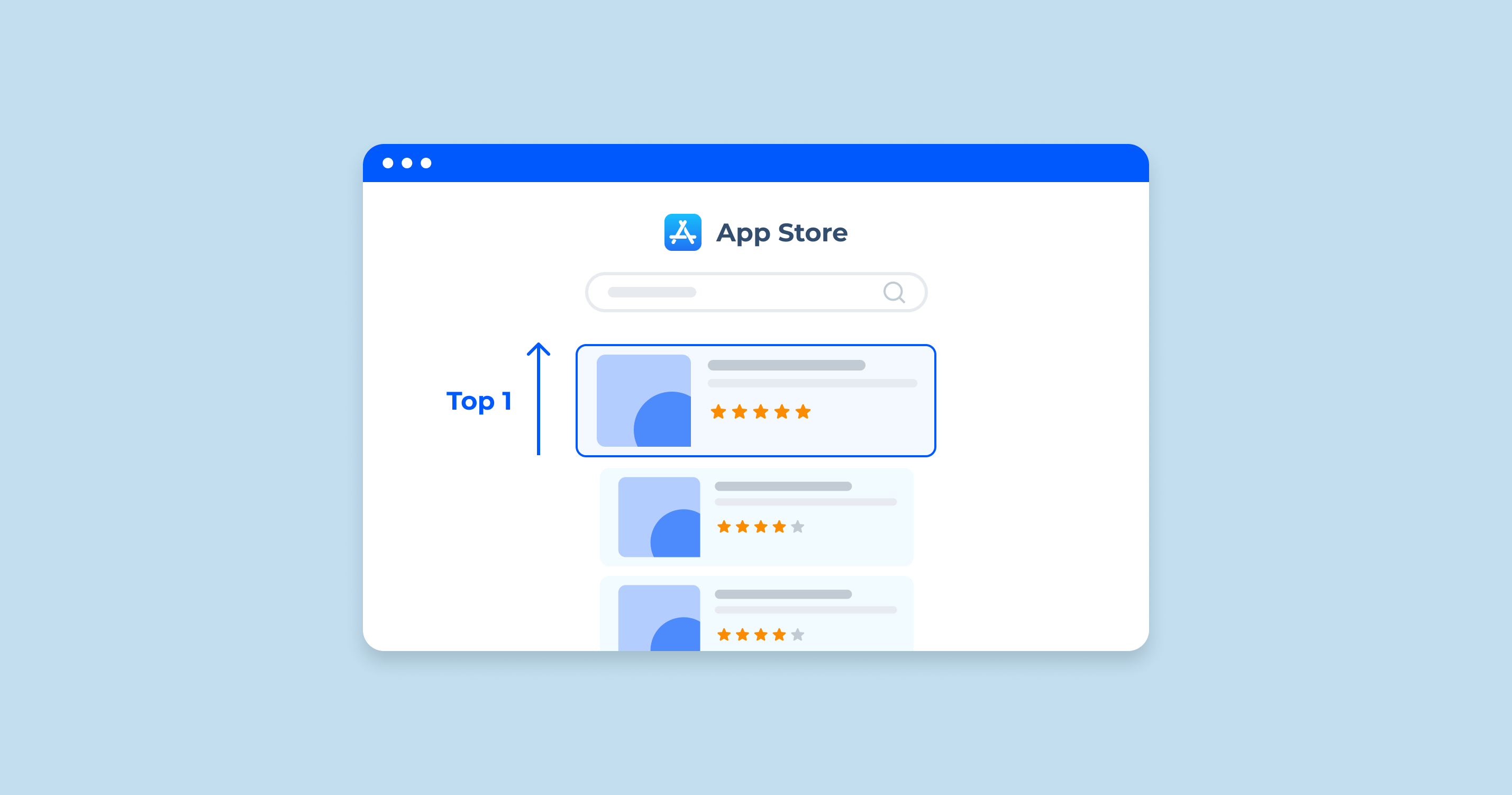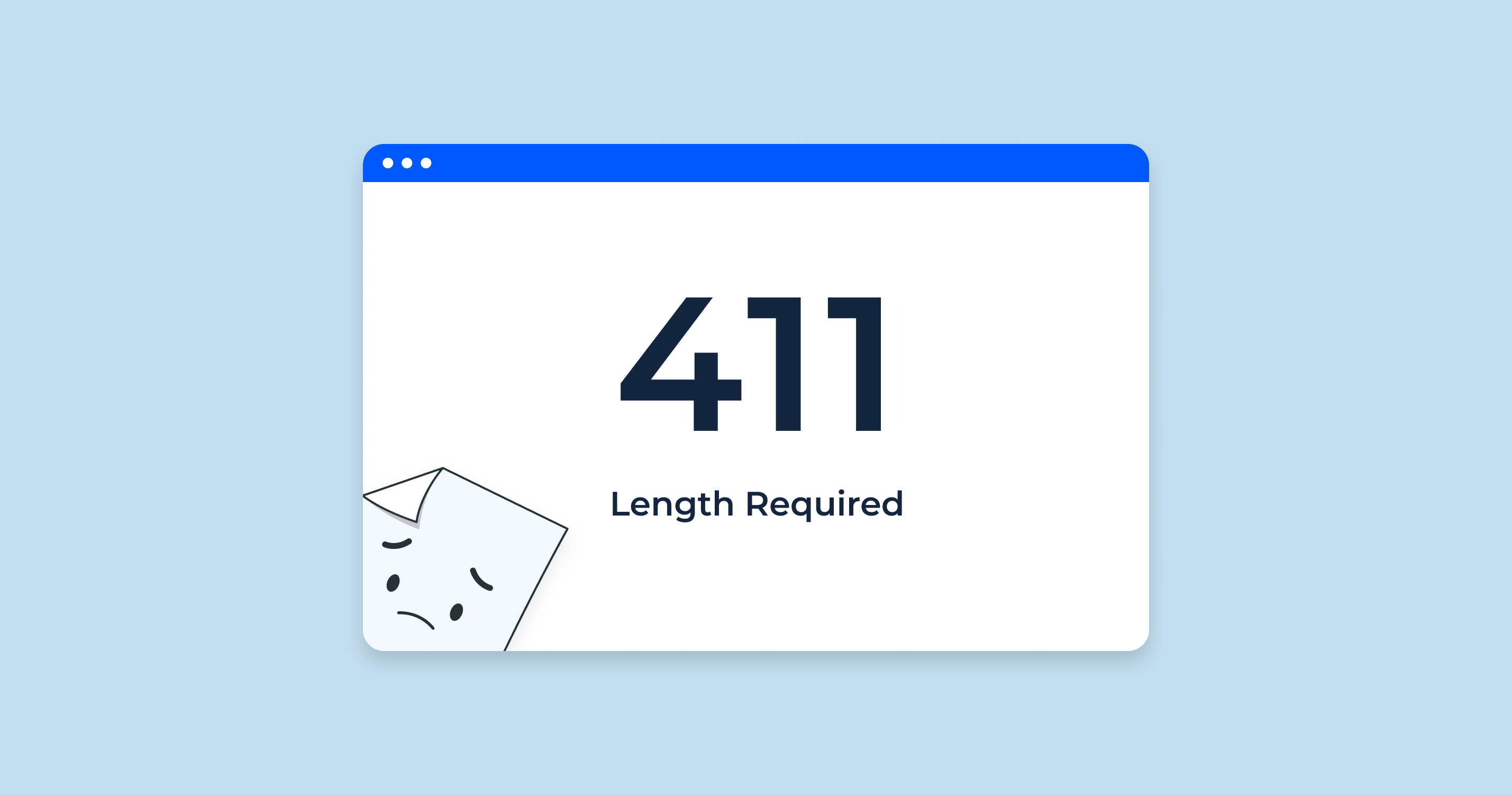The HTTP 418 status code, also known as “I’m a teapot”, is an Internet status that is part of the HTTP/1.1 standard. It was originally defined as an April Fools’ Day joke in 1998 as part of the Hyper Text Coffee Pot Control Protocol (HTCPCP), a satirical extension of HTTP meant to control coffee pots.
The 418 falls within the class of HTTP response status codes in the 4xx range, which indicates that the client seems to have erred. However, the 418, known as “I’m a teapot,” is somewhat unique in this group because it’s not meant to signify a real error. Instead, it was created as part of a joke protocol, the Hyper Text Coffee Pot Control Protocol (HTCPCP), and isn’t intended for use in actual HTTP communications.
In 2015, Masinter, currently serving as a principal scientist at the IETF, surfaced in a Twitter discussion to reiterate that the status code was indeed intended as a piece of satire.
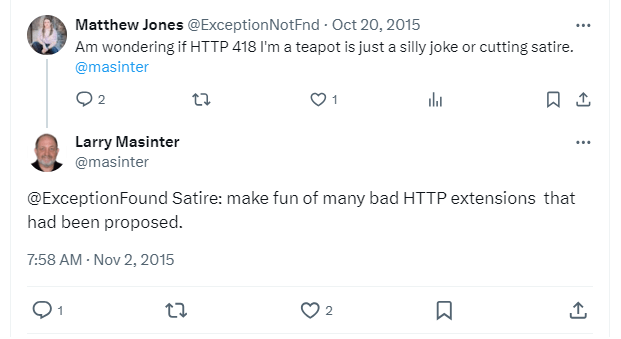
When a server returns the 418, it’s often a sign that a developer or server operator has decided to include it as a humorous or unconventional way of signaling an issue that doesn’t fit into other HTTP status codes. This helps avoid confusing status codes, as organizations like Internet assigned numbers authority (IANA) label 418 as (Unused).
For example, some developers have used the 418 to indicate that a client has attempted to execute an operation that the server is not designed to handle.
Even Google has implemented its unique rendition of this error, which can be found at Google.com/teapot.
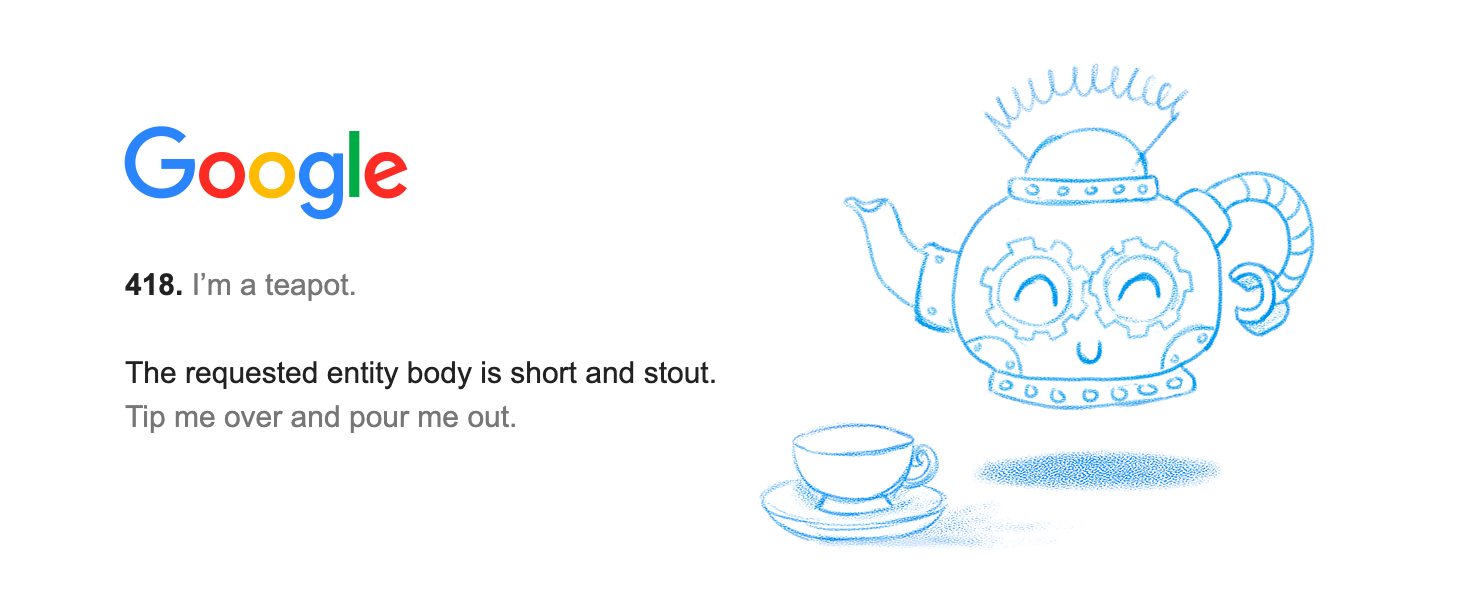
The server’s response with a 418 would look something like this in the HTTP response header:
HTTP/1.1 418 I'm a Teapot
Date: Sun, 3 Jul 2023 23:59:59 GMT
Content-Type: text/html
Content-Length: 123
The HTML body that would accompany such a response might look like this:
<!DOCTYPE html>
<html>
<head>
<title>I'm a teapot</title>
</head>
<body>
<h1>418: I'm a teapot</h1>
<p>The requested entity body is short and stout. Tip me over and pour me out.</p>
</body>
</html>
Note that the actual HTML content would depend on the server’s configuration and might be much more elaborate and detailed. Also, remember that the 418 is not intended to be used in regular web communications, so you’re unlikely to see it under normal circumstances.
The 418 does fall within the range of 4xx HTTP status codes, which are generally used to indicate client-side errors. These are some 4xx codes that are conventionally used:
| 400 Bad Request | The server could not understand the request due to invalid syntax. |
| 401 Unauthorized | The request requires user authentication. |
| 403 Forbidden | The server understood the request, but refuses to fulfill it. |
| 404 Not Found | The server has not found anything matching the Request-URI. |
| 429 Too Many Requests | The user has sent too many requests in a given amount of time. |
Again, it’s worth emphasizing that while these codes are in the same range, none of them are truly “similar” to 418 in their intended use or meaning, given 418’s unique, humorous origins.
The kind of request that triggers a 418 can vary widely, as it’s up to individual server operators or developers how they want to use it. It might be triggered by a specific type of request, by a request coming from a specific IP address, by a request that includes specific headers, or any number of other criteria depending on how the server is configured.
To sum up, while the 418 started out as a joke and is not intended to be used in regular HTTP communications, it has gained a place in Internet culture as a humorous piece of trivia among web developers.
Common Issues and How to Fix a 418 Status Error
While HTTP status code 418, also known as “I’m a teapot,” was originally intended as a joke, its unexpected appearance can sometimes indicate unusual server behavior or other unconventional scenarios. Although this status code doesn’t typically represent a real problem, understanding the potential reasons behind its occurrence can help identify and resolve any underlying issues.
Below are some common scenarios where you might encounter a 418 and suggestions for troubleshooting them.
Unexpected Server Behavior
Encountering a 418 might indicate that the server is behaving unexpectedly, possibly due to an unusual configuration.
Third-Party Libraries or Middleware
Some libraries or middleware might use the 418 status code for specific cases, such as blocking web crawlers or as a unique response for certain conditions.
API Miscommunication
If you’re interacting with an API that returns a 418 status code, it might indicate some form of miscommunication or incorrect usage of the API.
Browser Issues
Although less likely, browser issues could cause the unexpected display of a 418 status.
Remember, the 418 status code is intended as a joke and is typically used in non-standard ways. Its appearance is often a sign of a developer or server operator’s sense of humor, rather than a problem that needs troubleshooting.
Detect 418 HTTP Status Code Issues with HTTP Status Code Checker
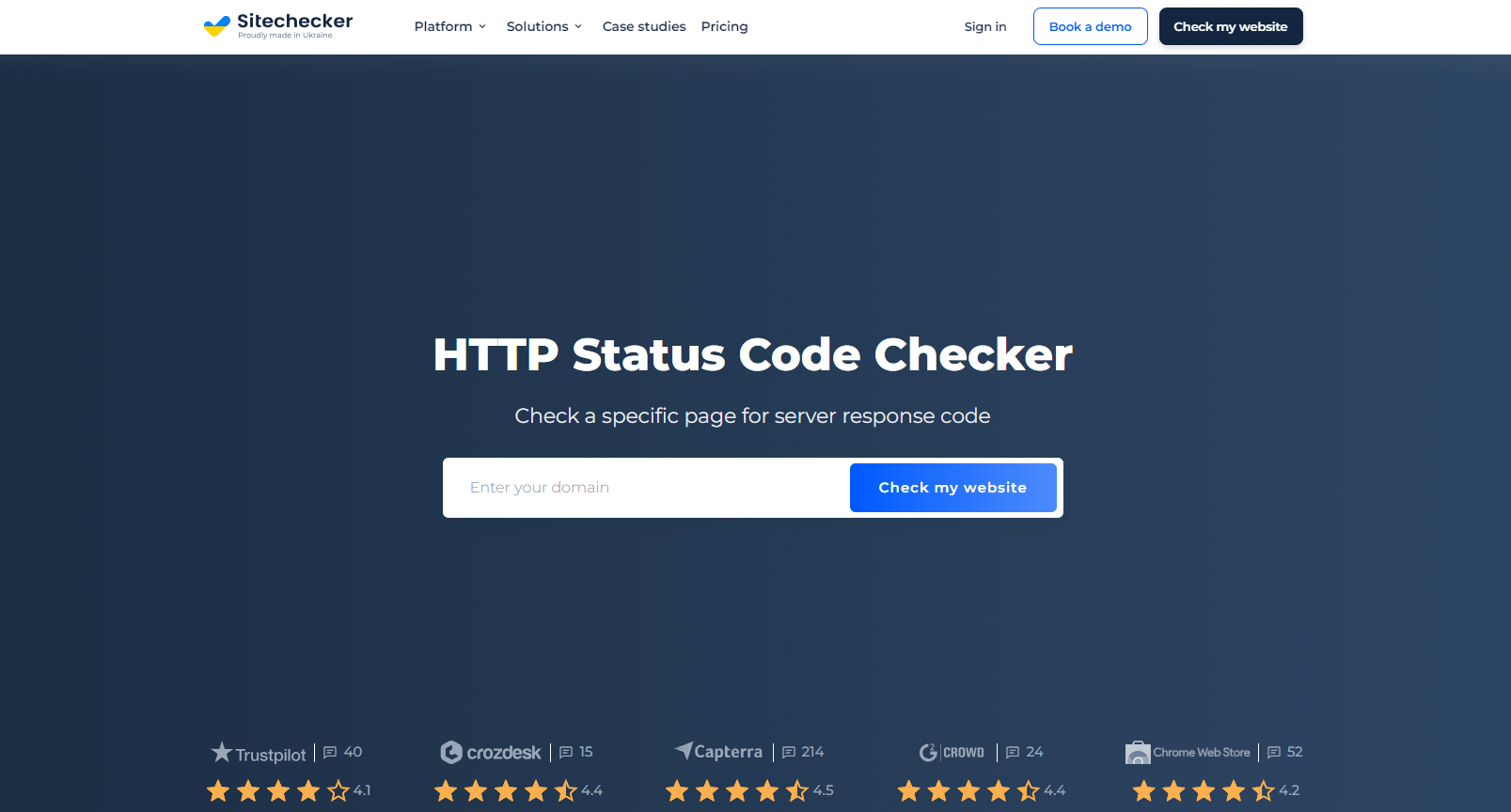
HTTP Status Codes Checker offers a wide range of website SEO audit and analysis services, including the ability to identify HTTP status codes. With its powerful crawling capabilities, Sitechecker.pro can scan your website and identify the status codes returned by each page.
By leveraging the data from Sitechecker.pro, webmasters and SEO specialists can gain a detailed insight into the health of their website from an SEO perspective. This includes understanding server responses, which is crucial for ensuring optimal site accessibility and performance. Any pages that return a 418 status code can be analyzed to determine why they are doing so and address any potential issues.
Moreover, Sitechecker.pro doesn’t just stop at identifying the problem. It also offers solutions and recommendations on how to fix detected issues, including improper use of HTTP status codes. By taking advantage of these features, you can ensure your website is adhering to SEO best practices and providing the best possible experience for both users and search engines.
Conclusion
HTTP 418 status code, “I’m a teapot,” is largely a piece of web development humor, but its unexpected appearance can signal an unconventional situation needing attention. While usually harmless, its detection can prompt developers to review their code, configurations, and API interactions.
Tools like Sitechecker.pro can be invaluable in such instances, detecting the 418 status code, diagnosing its origins, and even providing solutions to potential issues. Despite its quirky nature, the 418 status code highlights the importance of understanding server responses, applying best practices, and utilizing the right tools for maintaining optimal website performance.
